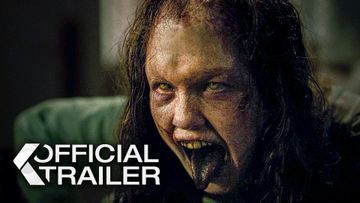The Exorcist: Scarlett Johansson in new film in horror series
A completely new approach awaits us
The cult series "The Exorcist " is getting a fresh coat of paint – and with plenty of star power. As Deadline reports, Scarlett Johansson will be taking on a role in a new film.
Details about the plot and Scarlett Johansson's role remain top secret for the time being. What is certain, however, is that director Mike Flanagan, known for series hits such as "The Haunting of Hill House" and films like "Doctor Sleep", is working on a completely new approach. Although the upcoming film is set in the familiar "Exorcist" cosmos, it is not intended to be a direct sequel. He has already revealed to the Hollywood Reporter that he sees this project as an opportunity to make "the scariest movie" of his career.
The original plan was to create a trilogy under the direction of David Gordon Green. After all, he also successfully revived the "Halloween" series. However, after the disappointing reactions to "The Exorcist: Believer", the planned film series was scrapped. Instead of a sequel, the studio is now venturing a new start.
A film at the right time: social change and new fears
When "The Exorcist" was released in 1973, it was set in a changing society. The early 1970s were characterized by political crises, growing scepticism towards institutions and a general uncertainty about the future. It was precisely in this climate that a film burst onto the scene that dealt surprisingly seriously with faith, science and the question of evil. The story of young Regan, who is possessed by a demonic force, reflected the cultural insecurity of the time and brought collectively repressed fears to the big screen.
Religion and terror: a new approach in horror films
"The Exorcist" was clearly different from other horror films of its time because it focused on a religious ritual – Catholic exorcism. The film did not treat this as a pure fantasy element, but with a seriousness that lent weight to the subject. The priest characters were not flawless heroes, but people full of doubts and inner conflicts. This portrayal lent the film an extraordinary credibility.
It made the horror not only physically but spiritually tangible. The audience was forced to deal with questions that went far beyond the movie itself: Does evil really exist? Where are the limits of scientific explanation? This deeper dimension turned "The Exorcist" into a cultural topic of conversation that occupied religious and non-religious people alike.
A shock that hit pop culture
The reactions to the film's release are legendary to this day: viewers left the auditoriums in horror, collapsed or needed medical help. Whether some of these stories were exaggerated or not hardly mattered – they contributed significantly to the film's myth. "The Exorcist" became a symbol of how powerful and disturbing cinema can be.
A discussion about the limits of artistic representation, the effect of violence and the question of whether horror is a legitimate form of art flared up in the media and among the public. The film was not only a box office hit, but also a cultural event that deliberately provoked and shattered expectations.
Visual icons: How "The Exorcist" shaped the horror genre
In cinematic terms, "The Exorcist" set standards that are still influential today. The sober, almost documentary-like staging combined with drastic special effects created a horror that unfolds more slowly but more deeply than in many previous films. Scenes such as Regan's spinning head or the floating exorcism in the darkened room are among the most famous images in film history.
This iconic visual language can be recognized in numerous later productions. Whether exorcism films of the 2000s, horror series such as "Haunted Hill House" or modern parodies: "The Exorcist" is the reference point to which the genre is repeatedly oriented. The film defined how horror can look, sound and work – and that it can be taken seriously.
Lasting influence on religion, psychology and society
The success of the film led to a noticeable increase in public interest in real exorcisms. The media increasingly reported on alleged cases of possession, and even church institutions recorded a higher demand for exorcism rituals. At the same time, however, "The Exorcist" also stimulated discussions about mental illness.
Many viewers recognized parallels in Regan's behaviour to mental conditions that were still little researched at the time. As a result, the film indirectly contributed to initiating social conversations about mental health – a topic that is still highly topical today.
Conclusion: A horror film as a cultural milestone
"The Exorcist" is far more than a classic of its genre. It is a cultural turning point that reignited religious debates, raised psychological questions and liberated the horror film from the niche of trivial entertainment. Its impact remains palpable to this day – in films, in the media and in the collective consciousness. Few works have had such a lasting influence on the cultural climate as this extraordinary horror film, which has lost none of its dark fascination even decades later.

